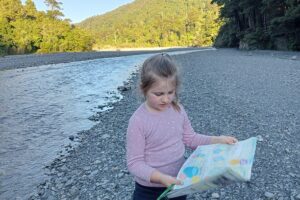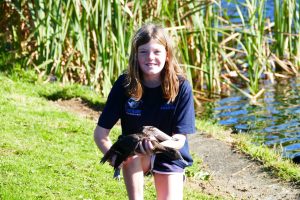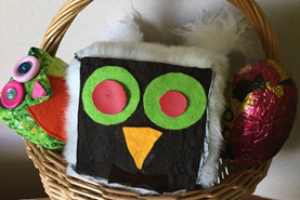By Eden (age 6)
My name is Eden and I love native birds. During the lockdowns, my family learnt all about different New Zealand animals. For our kiwi week, we did lots of activities and made things all about kiwis. We visited the Native Bird Recovery Centre in Whangarei. We saw a talking tui and I even got to touch a North Island Brown kiwi. I interviewed Robert Webb, who rescues injured and sick birds. He looks after hundreds of native birds each year. There are only a few people who help wild New Zealand birds. Robert is a very important person. He is amazing!

How many birds do you help each year?
Around 1,300 birds every year. Breeding season takes place from November to February. We normally get about 500 baby birds. You could even get a nest brought in with little baby moreporks.
What kinds of birds do you rescue?
All the protected and wild birds. We don’t look after budgies or canaries, because they have to be looked after specially. It is a lot different than a native bird. If you give a cockatoo medication that I would give to a kaka, it will kill the cockatoo. The birds in the wild have to look after themselves. They will eat different leaves off trees (eg. the broad leaved hebes), which are like medication for them.
How can someone help if they find a sick or injured bird?
They need to keep it warm and quiet. Put it in a box with something soft inside. No food or water, because it can do a lot of harm to them when they are very ill.
What do you do when a bird comes in?
We take the person’s name and number, and find out where the birds have come from. When the bird gets better, we give them the chance to let the bird go. Most people want to release the bird themselves.
How do you look after birds at the Centre?
It’s a bit like going into a hospital. We have to find out what is wrong with the birds. Then we know what medicine to give them to make them feel better. If it is cold, we give them an electric blanket to keep them warm. We feed them and nurse them back to health. They have to feel comfortable with us. If you bring a bird from the wild in, it will be very frightened.
How long has the Bird Centre been going for?
About 30 years. Before that, we were rescuing birds from our home for about 5 years.
Who works at the Northland Native Bird Recovery Centre?
My wife Robyn, and myself. Every weekday, we have two volunteers helping us.
What was the first ever bird you rescued?
It was a harrier hawk, that had been shot. I have always been interested in the wild birds. I enjoy nursing them back to health and then setting them free.
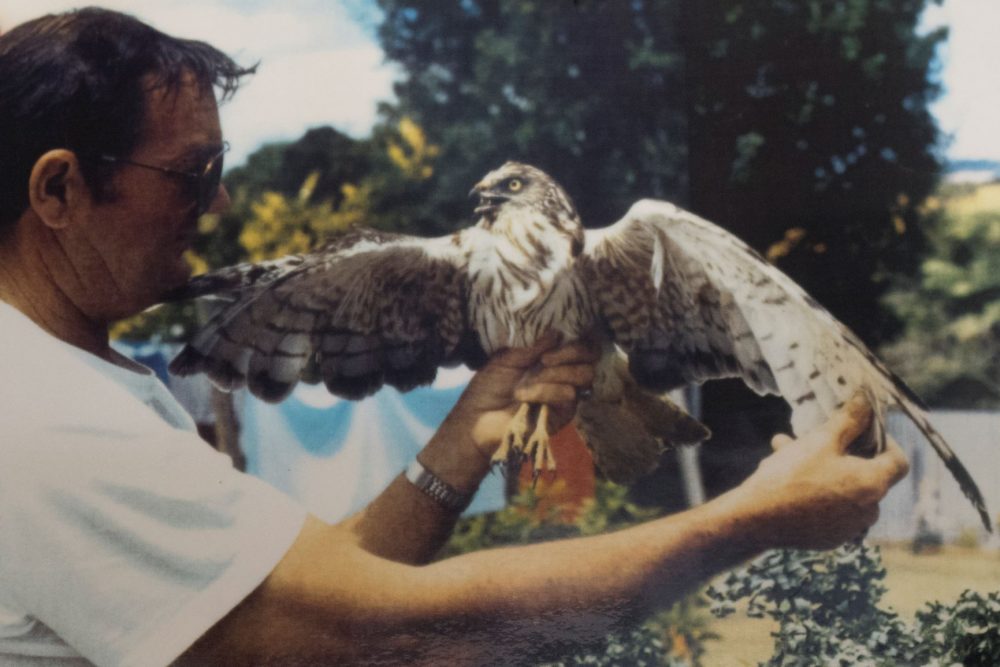
What are some of the strangest creatures you have rescued?
I rescued a tuatara, who came from the Poor Knight Islands. They are very rare and few people ever see them. We had it for 9 months and watched him go through hibernation. When he came right, we let him go again, back to the Poor Knights.
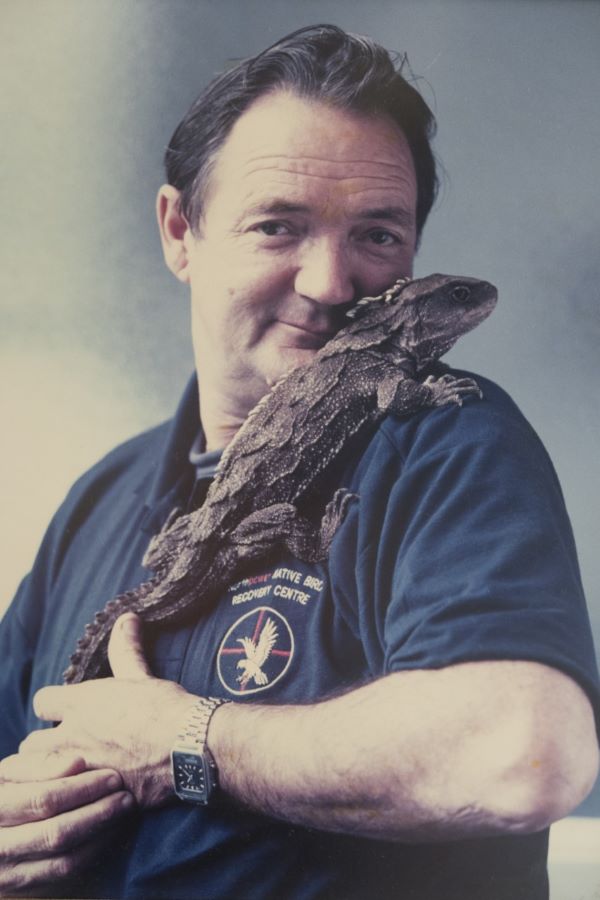
What have been some of your favourite birds?
Some of my favourite birds are the morepork and the kaka. The little baby moreporks are very small and white. They sometimes still have their eyes closed. My wife and I, sit out on the deck in the morning feeding them with a pair of tweezers.
Can you tell us about Sparky the one-legged kiwi?
Sparky is a North Island Brown kiwi. He is 16 ½ years old. When I got him he was about 2 months old and he lost part of his leg. He stood in a terrible trap when he was a little baby. It went off and snapped shut on his leg. He can’t go back in the wild because he has only got the one leg. So, he lives with us now and should be able to live for 40 to 50 years.
What do you feed the kiwi?
They love earthworms. They can get worms in their enclosure and we also make up a bowl of food for them at night. It is a mix of ox heart, banana, sultanas, sweet corn and peas.
How much does it cost to feed the birds at the Centre?
It depends on what the bird is, some of them are quite simple to feed. We buy fresh fruit so the birds are getting the best foods. But if we get in a big royal albatross, they cost about $25 each day to feed. We normally have to keep them for 1 to 2 weeks, so that can be very expensive. We give them fresh fish, prawns and muscles, so they can build their fat content up. It takes the albatross one year to go right around the world. When they are coming past New Zealand (in about November to January), they can get caught in the storms on the West coast. They are on their way to the Antarctic.
How do you help to educate people about wildlife?
We have an education Centre, where school children can visit. There are many display birds and information about them. If you are studying a bird, like a kiwi, you can come to the Centre to learn all about it. You may also be able to stroke one. You will learn what the kiwi feels like. They have rough feathers on top and soft ones underneath. Children can display their bird artworks on the walls. Children are our next generation, they need to grow up knowing that looking after the birds is very important. All our forests, were planted by birds over many, many years. The birds eat the berries off the trees. When they go to the toilet, the seeds drop on the ground. A little seed will grow and that turns into a big tree. So, the birds are very important. Education is a really important role.
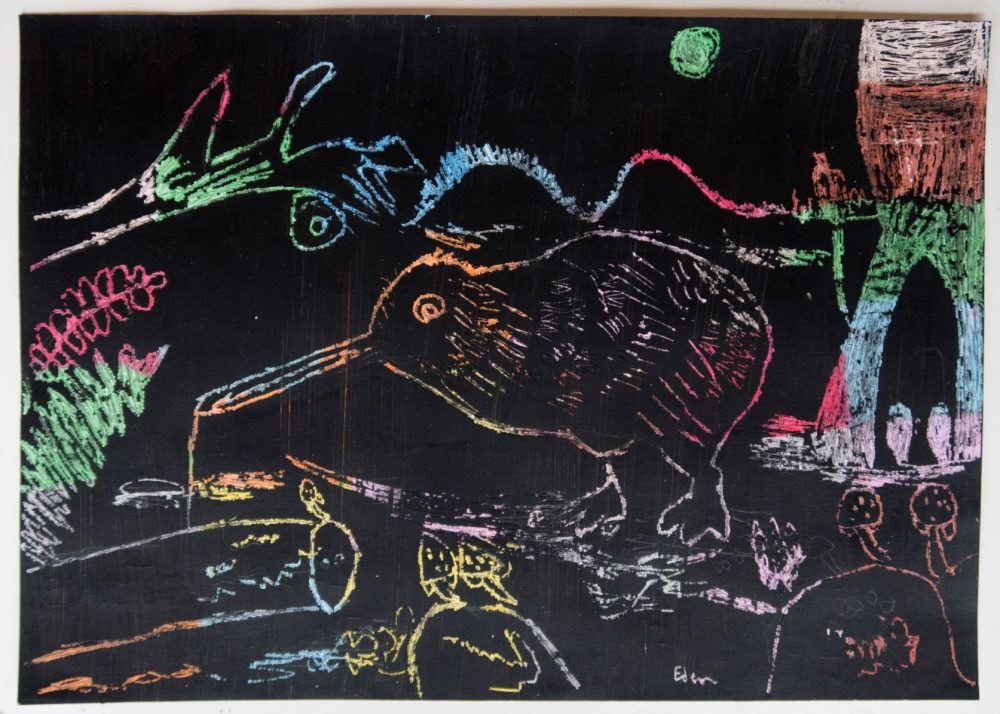
How can people help the Bird Recovery Centre?
The biggest thing for us is funding. When people give us donations, it goes towards feeding the birds and medication. We don’t get paid to work at the Bird Centre. It has been 19 years since my wife and I have been on holiday. So, you have to be dedicated.
What is the biggest threat to native birds?
It’s things that human’s make and do, and sheer greed. Cutting forests down is one of the biggest threats. Nobody own’s birds, but we are all responsible for them. Some of the biggest threats to kiwi’s are dogs, pests and vehicles.
What are your hopes for the future?
To find someone who is passionate about New Zealand birds, to run the Centre. We want to build the Centre up and get more funding, so we can employ someone to take over from me. Then they will carry on looking after the birds.
What can children and adults do to help?
You can help by planting trees that feed native birds. Such as, kowhai, flax, nikau, puriri, karaka, pohutukawa and kahikatea. Many birds can starve during winter months. You can also set up bird feeders and look after the trees at your school or at home.
What message would you like to give to children who care about nature?
Stop and think about all the wildlife, including all the animals and trees. Be kind to them. If you go for a walk, notice what native birds are around you. If you look after them, they will be around when you grow up. One day, you’ll take your own children for a walk through the forest and you can say ‘We looked after those little birds and trees and that is why they are still around today.’ Looking after the trees and birds is very important.
Have a look at my Learning Story about my visit too.

